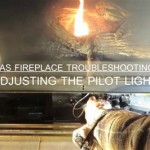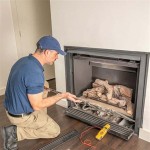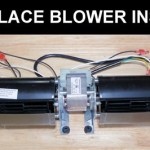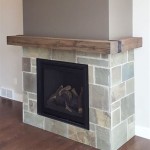Understanding Sealed Combustion Fireplaces
Sealed combustion fireplaces, also known as direct-vent fireplaces, represent a significant advancement in fireplace technology. They distinguish themselves from traditional fireplaces through their closed combustion system, which draws combustion air from outside the home and vents exhaust gases directly outdoors. This design offers several advantages in terms of efficiency, safety, and indoor air quality compared to older, open-hearth models.
The primary difference lies in the air source. Traditional fireplaces utilize air from within the room to fuel the fire. This process can lead to drafts, heat loss, and the introduction of pollutants into the living space. In contrast, a sealed combustion fireplace eliminates these issues by operating independently of the home's interior atmosphere.
The operation of a sealed combustion fireplace involves a double-walled pipe system. One pipe draws fresh air from outside, delivering it directly to the firebox. The other pipe vents exhaust gases – including carbon monoxide and other potentially harmful emissions – back outside. This closed loop ensures that combustion byproducts are never released into the home, contributing to a healthier and safer living environment. The firebox itself is sealed to prevent any leakage of gases or sparks into the room.
Enhanced Energy Efficiency
One of the key benefits of sealed combustion fireplaces is their increased energy efficiency. Traditional fireplaces are notoriously inefficient, with a significant portion of the heat generated escaping up the chimney. They can even create a negative pressure within the home, drawing warm air out and cold air in, effectively negating the warmth produced by the fire itself. Sealed combustion fireplaces, on the other hand, are significantly more efficient. Because they draw air from outside and vent exhaust directly, they don't rely on the home's air for combustion. This reduces heat loss and minimizes drafts, allowing more of the generated heat to radiate into the room. Many sealed combustion models boast efficiency ratings of 70% or higher, significantly surpassing the efficiency of traditional open fireplaces, which often fall below 20%.
The increased efficiency translates directly into lower heating costs. During periods of cold weather, a sealed combustion fireplace can effectively supplement a home's central heating system, reducing the demand on the furnace or heat pump. Over time, the savings in energy consumption can offset the initial cost of installing the fireplace.
Improved Indoor Air Quality
Another crucial advantage of sealed combustion fireplaces is their positive impact on indoor air quality. Traditional fireplaces release smoke, ash, and other pollutants into the home, which can exacerbate respiratory problems and negatively affect overall health. Open hearth fireplaces also contribute to the buildup of carbon monoxide, a colorless and odorless gas that can be lethal in high concentrations.
Sealed combustion fireplaces eliminate these concerns by keeping all combustion byproducts contained within the sealed system. The direct-vent design ensures that exhaust gases are vented directly outside, preventing them from entering the living space. This significantly reduces the risk of carbon monoxide poisoning and other respiratory issues. For individuals with allergies or asthma, a sealed combustion fireplace can be a particularly appealing option.
Furthermore, the sealed firebox prevents drafts and minimizes the circulation of dust and allergens within the home. This creates a cleaner and healthier indoor environment for all occupants.
Increased Safety Features
Beyond efficiency and air quality, sealed combustion fireplaces offer enhanced safety features compared to open-hearth models. The risk of sparks escaping the firebox and igniting nearby materials is significantly reduced due to the sealed design. This is particularly important in homes with children or pets, where the risk of accidental contact with the fire is greater.
Many sealed combustion fireplaces also incorporate safety features such as oxygen depletion sensors (ODS) and automatic shut-off valves. ODS sensors monitor the oxygen levels in the room and automatically shut off the fireplace if the oxygen level drops to an unsafe level, indicating a potential ventilation problem. Automatic shut-off valves prevent gas from flowing to the fireplace if the pilot light is extinguished, further reducing the risk of gas leaks.
The direct-vent system also eliminates the need for a traditional chimney, which can be a fire hazard if not properly maintained. Chimney fires can occur due to the buildup of creosote, a flammable substance that forms when wood burns. Because sealed combustion fireplaces vent directly through a wall or roof, the risk of a chimney fire is eliminated.
Finally, sealed combustion fireplaces often come with a glass front that remains relatively cool to the touch, minimizing the risk of burns. This is in contrast to traditional fireplaces, where the exposed flames can pose a significant burn hazard, especially to young children.
In summary, sealed combustion fireplaces offer a compelling combination of energy efficiency, improved indoor air quality, and enhanced safety features. While the initial cost of installation may be higher than that of a traditional fireplace, the long-term benefits – including lower heating costs, a healthier living environment, and reduced risk of fire – make them a worthwhile investment for many homeowners. Selecting the right model and ensuring proper installation are critical for maximizing the benefits of a sealed combustion fireplace. Consult with a qualified HVAC professional or fireplace specialist to determine the best option for individual needs and home characteristics.

Why Should I Install A Closed Combustion Fireplace Firehouse

Sealed Combustion Appliances And Hot Tub Parties Greenbuildingadvisor

And Installing A Closed Combustion Fireplace What S Involved Turbovent

What Is A Combustion Fireplace

What Is A Combustion Fireplace

The Best Wood Burning Fireplace Inserts Or Stoves Ecohome

Before Winter Hits Why It Makes Sense To Invest In A Closed Combustion Fireplace Turbovent

Top Direct Vent Gas Inserts In D C

Slow Combustion Fireplaces For Your Home In South

Slow Combustion Horizon New Zealand
Related Posts








